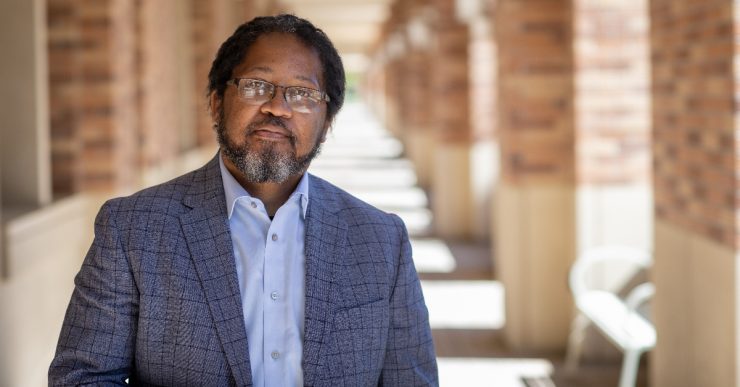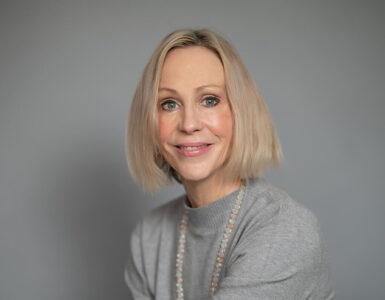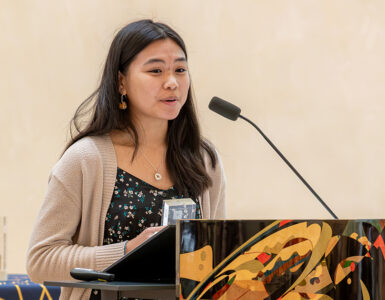I’ve often said that I began the work of diversity, equity and inclusion (DEI) about 15 minutes after I was born. At no point in my 50+ years have I ever had the choice to opt-out of difficult conversations on racism, discrimination and prejudice. Having to dismantle stereotypes as a child was commonplace, becoming proficient in code-switching and room-reading as a teenager was a fundamental survival skill, and holding dogged optimism as a parent became essential. I, like so many others, was born into this work. I simply opted to stay in it and use what I learned (and earned) along the way to help others.
I began this work professionally over 30 years ago and have always been guided by a commitment to expand equity and access to everyone in the campus community: faculty, students and staff.
Since coming to Chapman University six months ago, I have been looking at how the university’s history and policy affect procedures and impact populations. This involves looking at how Chapman has historically operationalized DEI as well as the budgetary allocation for DEI across campus. Here are some of Chapman’s strengths:
- It starts at the top. If the president is not on board, DEI efforts will stall. Chapman is fortunate to be under the leadership of Daniele Struppa.
- Within the organization I have met dedicated professionals who give of their limited time to advance Chapman’s DEI efforts. These unsung heroes of inclusion are some of our most valuable natural resources. They do the work because they care, not for recognition. They are consummate professionals and inspirational human beings.
- Chapman University has many of the core components that mirror leading practices around the country: demographic-supporting faculty/staff associations, a dedicated student cultural center space, robust first-generation programs, top- notch ethnic studies professors and invested academic deans advancing efforts in their respective colleges. Likewise, efforts such as those in the Leatherby Libraries, the Thompson Policy Institute on Disability and those in Greek Life are examples of excellent people doing exemplary work.
Toward a DEI Ecosystem
The key area for improvement is the development of the DEI ecosystem at Chapman. The university is optimally sized to allow DEI efforts to work in concert along departmental and organizational lines. In larger, more decentralized universities, this is often a clunky and inelegant undertaking. At Chapman, we can polish this effort to a shine. As we enter into a new strategic planning cycle, the opportunity to reflect DEI in our long-term planning will allow us to advance the work in a concerted manner.
The ecosystem, when broken down to a basic explanation, calls to mind something Joe Slowensky said over lunch when I first arrived: “This work requires us to recognize that when one department or unit does something, it impacts other areas of campus.” Ecosystem work is not about changing what you do, it’s about better organizing it, better communicating it and leveraging the expertise of the whole university for the betterment of the whole university.
Contemporary DEI efforts span the enterprise, touching upon everything: faculty advancement, supply chain, public safety, community engagement, research, information technology, marketing and communications, senior leadership development, intercollegiate athletics and human resources, just to name a few. This is the goal for the DEI ecosystem at Chapman. If you’re not strong in DEI, your organization becomes obsolete.
Progress in Process
There is important work yet to be done, but Chapman is moving in the right direction:
- Under the leadership of Provost Norma Bouchard, we are actively looking at every DEI and DEI-adjacent function of the Provost’s Office to determine an organizational structure representative of a world-class university.
- In some cases, departments and personnel will be reassigned to the Office of the Vice President for DEI, and in others, new positions will be developed to address specific needs.
- Future DEI efforts will undergo similar review to ensure organizational consistency in application as well.
- Transparency is key. Making it easier to find resources and key personnel for both current and prospective students as well as staff, faculty, alumni and stakeholders will be a priority and will be done in concert with Vice President of Strategic Marketing and Communications Jamie Ceman.
- Under the leadership of Vice President and Chief Information Officer Helen Norris, Chapman will begin using the NameCoach platform, a computer resource tool that assists in ensuring that we pronounce names of our culturally dynamic community members more accurately.
- Providing new resources to campus is an exciting way to get more people engaged. As of fall 2021, Chapman is now a member of the National Center for Faculty Development and Diversity and the Association on Higher Education and Disability. In spring 2022 we will join the Council for Opportunity in Education. As a member of these organizations, we will be engaged in a national network of professionals advancing DEI work in higher education.
As we build on current progress and work to develop the DEI ecosystem at Chapman, I invite the thoughts and participation of the entire campus community. When I present, I always say, “You are an expert in your own experience. Use that knowledge to share your worldview and help us advance this work.” As we build out the Division of Diversity, Equality and Inclusion, get involved. Whether you’re a DEI novice or an experienced professional, we want you to participate in this very special and crucial part of the Chapman experience.




